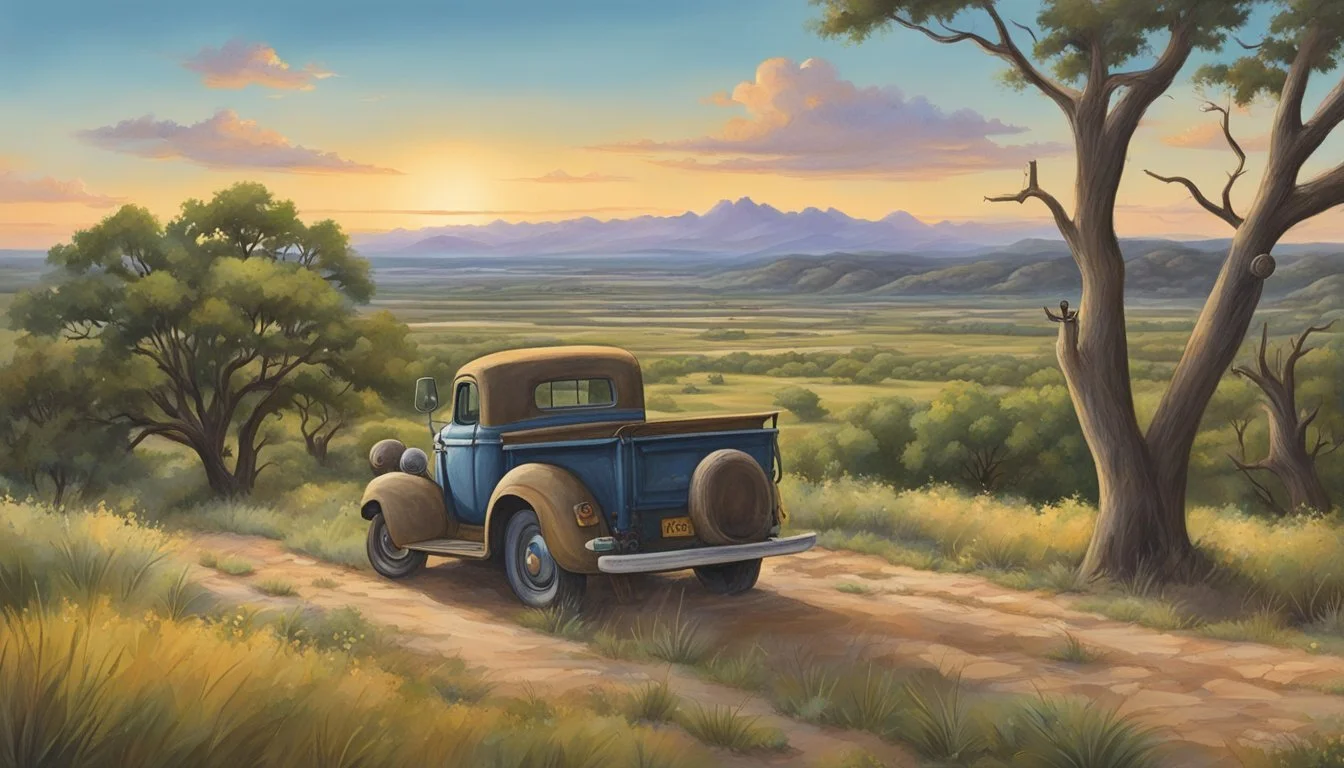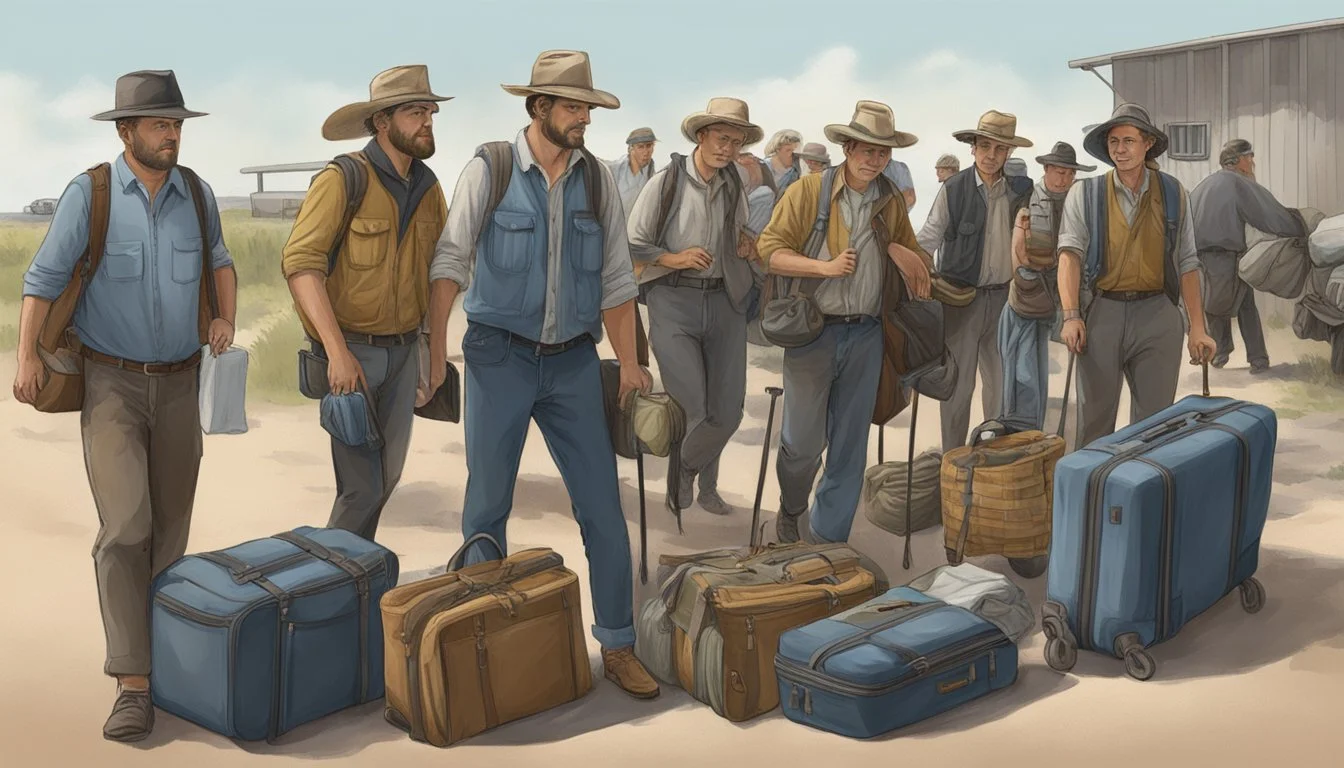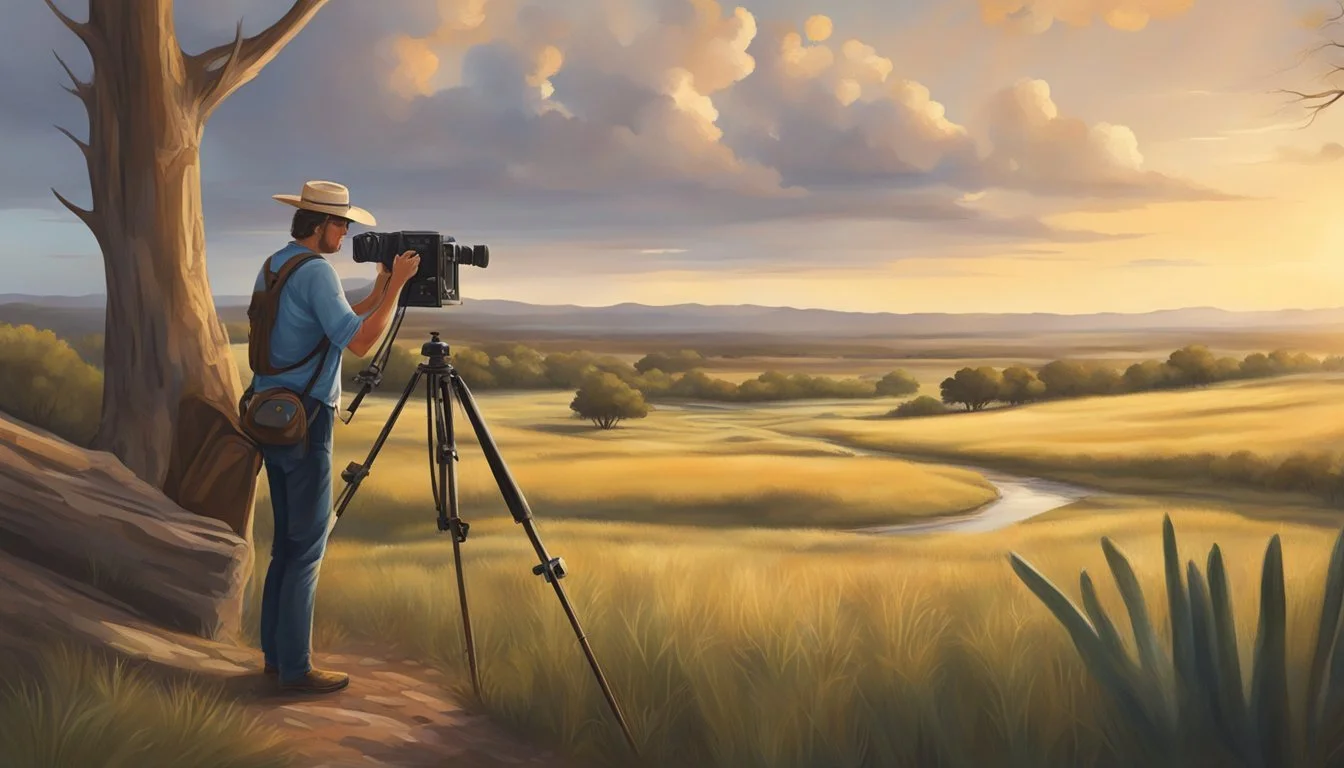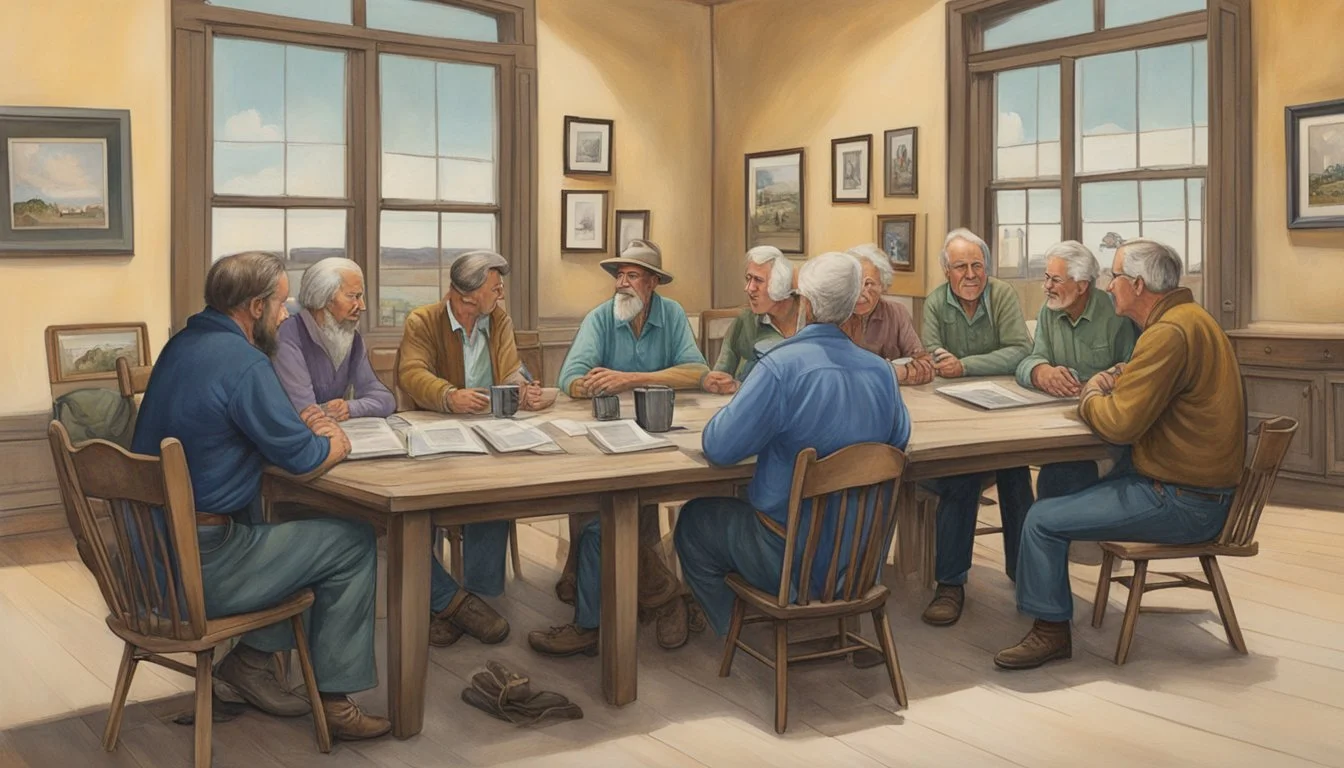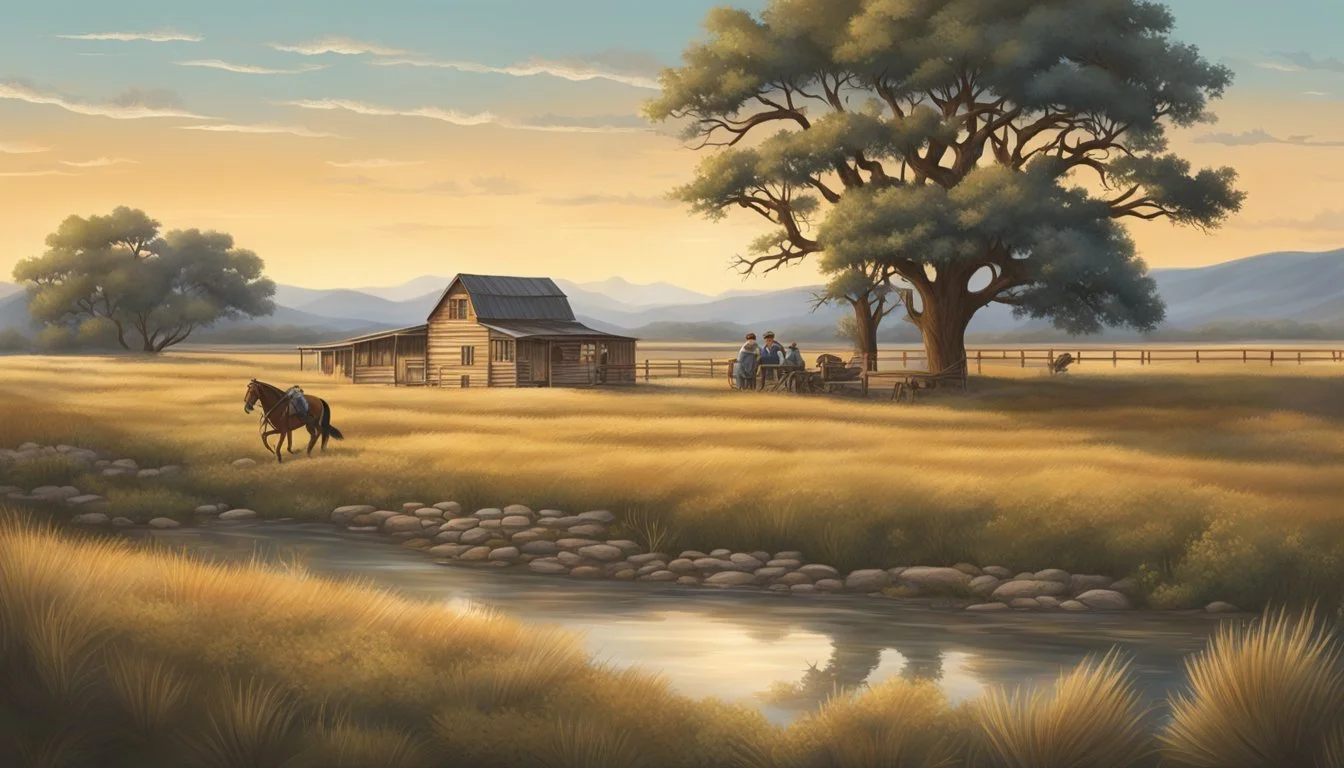German Texan Contributions to Texas Photography
A Historical Perspective
German Texans have played a significant role in the cultural and historical tapestry of Texas, leaving an indelible mark on varied facets of life, including photography. Their contributions to Texas photography capture not only the essence of the state's diverse heritage but also echo the stories and traditions of an influential immigrant community. Through their lenses, German Texan photographers provided a unique perspective on the evolving landscape, society, and milestones that have shaped Texas over the years.
As early settlers, German Texans brought with them a profound appreciation for documenting their new environment, with many becoming pioneering figures in the nascent field of photography in the region. Their photographs often went beyond mere documentation, offering insights into the daily lives of people during a time of rapid change and development. These images have been instrumental in piecing together historical narratives and contributed to preserving the rich German heritage within the wider cultural mosaic of Texas.
By solidifying moments in history through their photographs, German Texans not only enhanced the state’s archival records but also influenced the growth of a uniquely Texan photographic tradition. Their work reflects the synthesis of their German roots with their Texan identities, adding layers to the understanding of the state's past and the role of immigrant communities in the visual storytelling of American history.
Historical Context of German Migration to Texas
The migration of German immigrants to Texas had a profound effect on the culture and development of the state, sparking the formation of towns and influencing the social and economic landscape.
Early Settlement and the Adelsverein
The Adelsverein, formally known as the Society for the Protection of German Immigrants in Texas, played a pivotal role in organizing the migration of settlers from Germany to Texas during the mid-19th century. New Braunfels and Fredericksburg were among the notable towns founded by the Adelsverein to support the German settlers. These early efforts facilitated the legal and logistical frameworks necessary for the settlement and integration of German immigrants into the Texas frontier.
German Enclaves and Texas Hill Country
German immigrants established themselves in several areas within Texas, but the Texas Hill Country became a region of significant German influence. Towns such as Boerne, Mason, and Gillespie County emerged as hubs of German culture. The migrants often settled in broad, fragmented belts across south-central Texas, adapting to and shaping the local farming landscape. Many original German enclaves still retain elements of their heritage, contributing to the unique cultural mosaic of the state.
Influences of German Migration on Texas
The influx of German migrants had a lasting impact on the socio-economic and cultural aspects of Texas. A significant aspect was the negotiation of peace treaties with the Comanche natives, which allowed for safer settlement. Moreover, the Germans brought distinct architectural styles, customs, and traditions that enriched the Texan cultural identity. The legacy of German migration can be seen today in the state's laws, education system, and daily life, with towns like Fredericksburg and New Braunfels continuing to celebrate their German heritage.
Contributions to Art and Culture
German Texans have significantly enriched Texas' art and cultural landscape through distinctive architecture, traditional celebrations, and the preservation of their language and media.
German Texan Architecture and Material Culture
The architectural contributions of German Texans are particularly evident in towns like Fredericksburg. They brought Fachwerk (half-timbering) construction techniques, which are visible in many historic buildings. This style blends German and Texan elements, resulting in unique structural designs. In material culture, kitchens often became the heart of the home, reflecting the German emphasis on communal cooking and dining.
Key examples of German Texan architecture:
Traditional Fachwerk houses
The vereins (social clubs) and their halls
Iconic limestone churches
Traditional Festivals and Music
Festivals such as Wurstfest and Oktoberfest showcase the fusion of German and Texan cultures through music, beer, and cuisine. Polka and waltz music fill the air as attendees engage in traditional dancing. Fredericksburg's annual Oktoberfest is a prime example, celebrating Bavarian heritage with food, music, and customs like the tapping of the beer keg—O'zapft is!
Notable festivals with German influence:
Wurstfest in New Braunfels
Oktoberfest in Fredericksburg
Language and Printed Media
The German language remains a vital part of Texas' cultural fabric. Newspapers played a crucial role in maintaining the German language and connecting communities. Texas Germans read publications like Der Texas Deutsche, sharing news and stories in their mother tongue. Institutions like the Sophienburg Museum and the German-Texan Heritage Society preserve artifacts, documents, and printed media, underscoring the enduring impact of German language on Texas culture.
Key elements of linguistic contributions:
Newspapers: Continuation and proliferation of the German language
Museums and Societies: Preservation of written heritage and artifacts
German Texan Contributions to Photographic Arts
German Texans have played a significant role in the evolution of Texas photography, from preserving cultural narratives to influencing modern photographic practices.
Photography in Documenting Everyday Life
In the hands of German Texans, photography served as a means to chronicle the synthesis of German and Texan cultures. Their commitment to documenting everyday life provided a visual diary that reflected their dual heritage. Photographs often depicted communal gatherings, architecture, and landscapes, crystallizing the nuances of their daily experiences in Texas.
Preservation of Historical Photographs
The archival of photographs by German Texans has been crucial in preserving the material culture of the state. Collections of historical photographs have protected the integrity of Texas history, showcasing German influence in areas from construction to societal events. These efforts have safeguarded a wealth of visual information for future generations to study and appreciate.
Influence on Modern Texan Photography
Modern Texan photography has absorbed elements from its German Texan predecessors. Contemporary photographers in Texas frequently draw on the rich tapestry of Texan-German heritage, which is evident in everything from subject choices to compositional styles. This melding of perspectives has also encouraged a diversity of photographic expression within the state, keeping the history alive while also pushing the boundaries of the medium.
Economic Impact of German Texans
German Texans have been integral to the development of Texas's economy, significantly influencing both agricultural practices and the livestock industry.
Agricultural Development
German settlers brought advanced farming techniques to Texas, bolstering local agriculture. They introduced crops suitable for the Texas climate, such as corn, wheat, and rye, and emphasized the importance of crop rotation to maintain soil fertility. Their contributions to horticulture included the establishment of vineyards and orchards, diversifying Texas's agricultural output and laying the groundwork for food industries.
Livestock and Rural Economy
The rural economy was vastly impacted by German Texan contributions to the livestock sector. They played a key role in developing the cattle and sheep industries, promoting ranching practices that became standardized across the state. They also introduced dairy farming and cheese making, adding to the local food market and supporting rural livelihoods. The practice of shared grazing rights, akin to the German Allmende, strengthened community ties and optimized the use of communal pastures.
Social and Political Influence
German Texans played a significant role in shaping the military and diplomatic landscape of Texas.
Military Participation and War-Time Roles
During the Civil War, many German Texans were divided, with some supporting the Union due to their opposition to slavery, while others sided with the Confederacy. This split led to internal conflicts within the German Texan communities. Notably, in World War I, German Texans faced suspicion and hostility, yet many served honorably in the U.S. military, demonstrating their commitment to their adopted nation.
Peace Treaties and Relations with Native Americans
German Texans were instrumental in negotiating peace treaties with Native American tribes. They fostered relationships based on trade and mutual respect, which helped to stabilize the region during tumultuous times. Their diplomatic efforts contributed to a relatively peaceful coexistence between European settlers and Native Americans in parts of Texas.
Current State and Legacy
The influence of German Texans on the state's cultural landscape, particularly in the realm of photography, remains substantial. With deep roots in Texan history, institutions and individuals continue to preserve and celebrate this unique heritage.
Texas German Language and Dialects
German Texans have contributed to a unique linguistic tapestry in the state. While the Texas German dialect, which developed in Central Texas, has seen a decline, efforts by universities and cultural institutions aim to document and preserve it. Studies by the University of Texas have been pivotal in recording this unique dialect for posterity. With less than a few thousand speakers, mostly older generations, Texas German is considered an endangered language. The Handbook of Texas Online and Wikipedia provide resources about this dialect's characteristics and history, fostering broader understanding and appreciation.
Education and German Studies
Within Texas, education serves as a vital conduit for maintaining German cultural heritage. Universities, including the University of Texas, play a critical role in offering programs in German language and studies, which delve into the state's German influences. Through these academic programs, one can explore the progression of photography, documenting and analyzing contributions of German Texans throughout history. These educational efforts ensure that the state’s German legacy, manifest in various cultural facets, continues to enrich society.
Renowned German Texan Photographers
German Texans have made significant contributions to the field of photography in Texas, often capturing poignant images that blend cultural heritage with the American landscape. Their photographs serve as a testament to the symbiotic relationship between German culture and Texan identity.
Notable Figures
Hermann Lungkwitz
A renowned landscape photographer, Lungkwitz immortalized the Texas Hill Country with his pastoral landscapes that evoke the serenity of German countryside vistas.August F. M. Schönborn
A cartographer turned photographer, Schönborn is noted for his technical precision and brought a European sensibility to his images of Texas's burgeoning settlements.
Influences on Texan Photography
German Texan photographers often showcased architecture, natural landscapes, and community life, infusing local imagery with aspects of their German heritage. Their work provided a visual documentation of German's influence on Texas's urban and rural environments.
Cultural Significance
German Texans' photographs have helped preserve the legacy of German impact in Texas. Through their lenses, they narrated stories of immigration, settlement, and the blending of cultures. Their contributions remain valuable resources for historical and cultural studies, offering insights into the past and the interwoven fabric of Texas's identity.
Techniques and Style
Employing skills brought from their homeland, German Texan photographers were adept at various photographic techniques that enhanced the detail and quality of their images, often becoming trendsetters in the evolving world of photography during the 19th and early 20th centuries.

